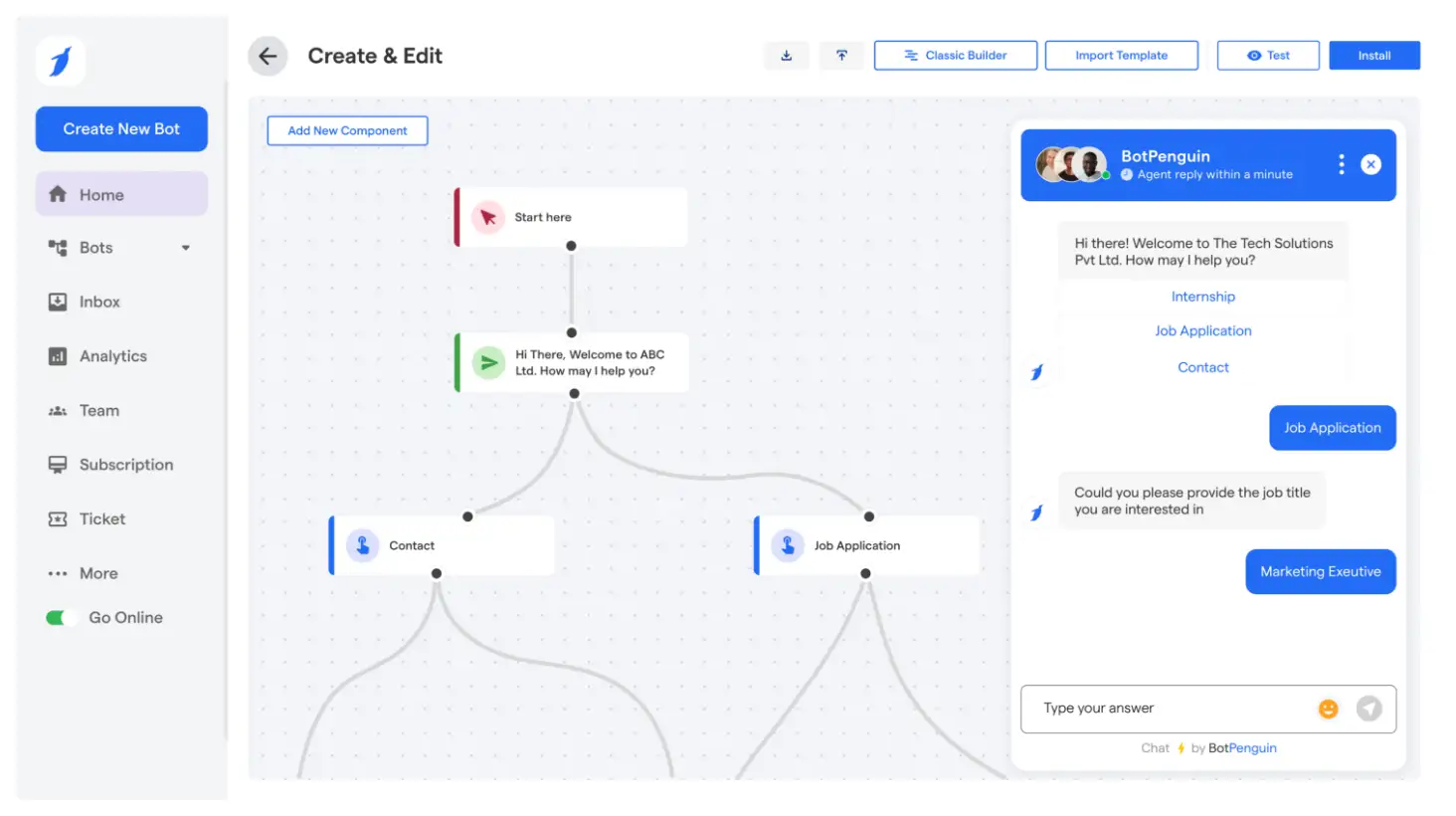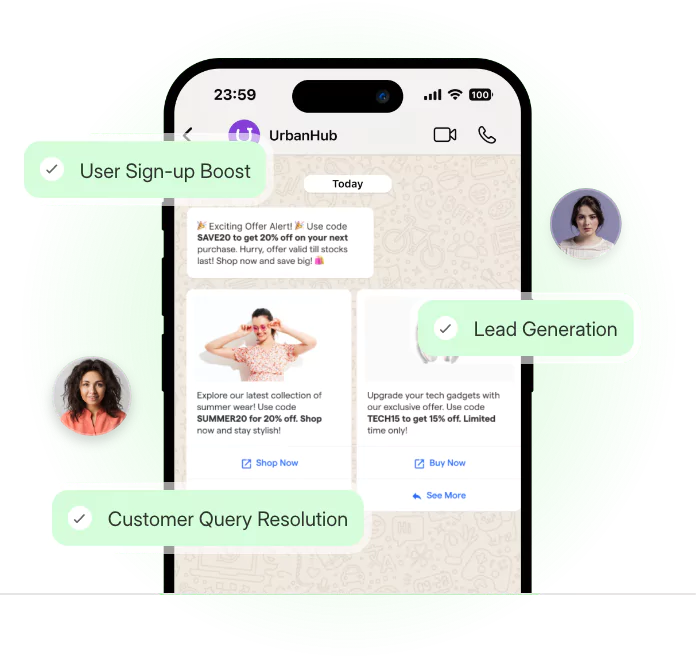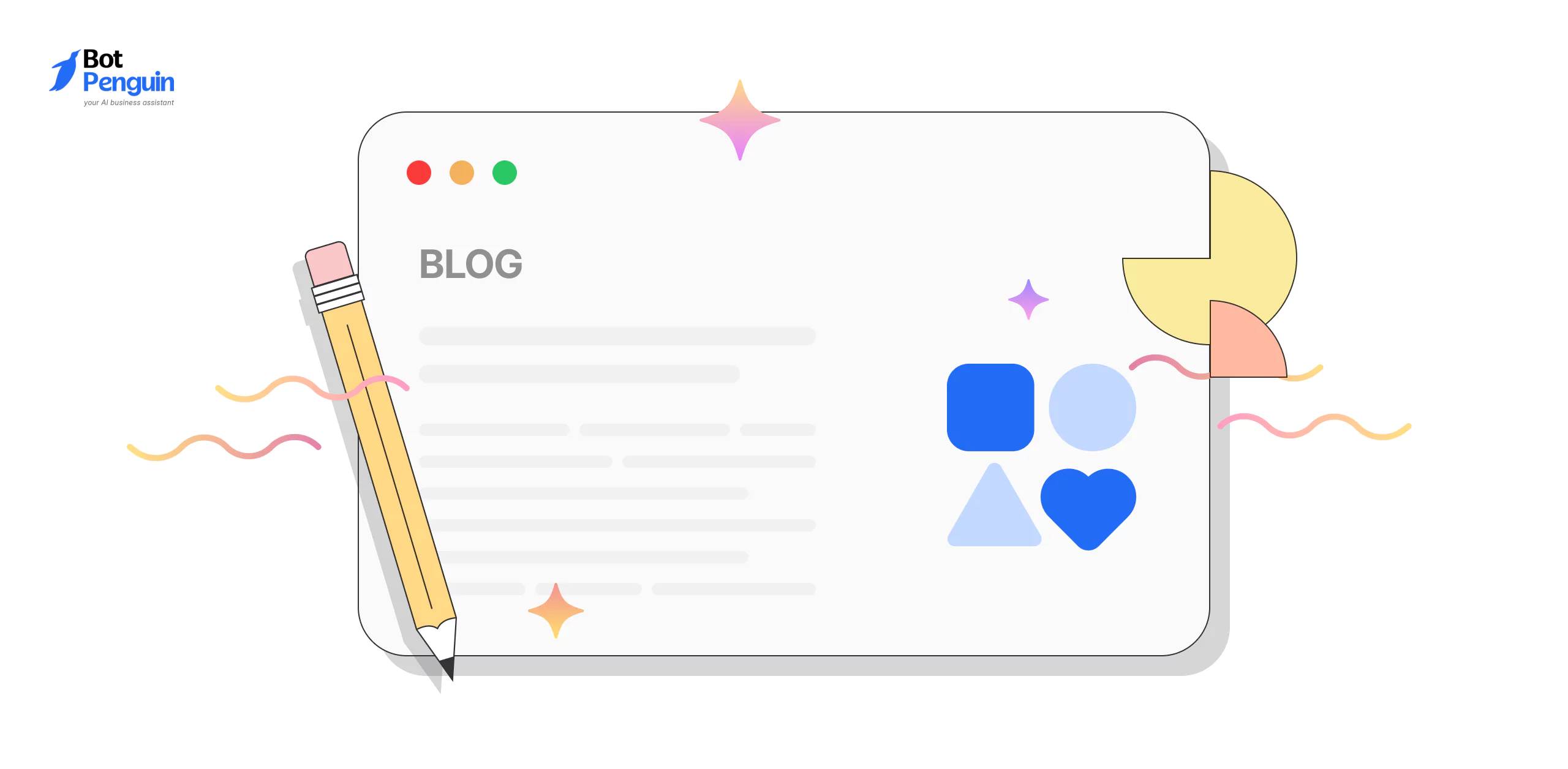Introduction
WhatsApp isn’t just for chats anymore—it’s now a powerful channel for customer support.
Businesses use it daily to handle hundreds of customer queries, but without structure, messages quickly turn into chaos.
That’s where a WhatsApp ticketing system steps in. It transforms every message into an organized ticket, making it easier to assign, track, and resolve issues efficiently.
This guide explains what this system is and how to set it up step by step.
By the end, you’ll know how to manage customer conversations seamlessly and deliver faster, more reliable support through WhatsApp.
What is a WhatsApp Ticketing System?
WhatsApp ticketing is a structured way to handle customer conversations by converting selected messages into support tickets. Each ticket is assigned, tracked, and closed just like in traditional helpdesk software—but all of it happens inside WhatsApp.
This system brings the discipline of ticketing to the convenience of chat.
Instead of scrolling through long message threads, teams can follow a clear process: ticket created → assigned to an agent → updated with status → marked as resolved. It brings order to high volumes of customer queries.
However, this structure isn’t built into WhatsApp by default. It requires access to the WhatsApp Business API. The standard WhatsApp Business app doesn’t support ticket creation, assignment, or automation.
Even with the API, tickets aren’t generated automatically.
Businesses need to build trigger flows or connect a CRM to define when a message should be treated as a ticket. This could be based on keywords, form submissions, contact labels, or specific user actions.
Only when these conditions are met does the system convert a chat into a ticket—keeping things focused and manageable.
How a WhatsApp Based Ticketing System Works
Here’s how the system typically functions:
A customer message comes in → it passes through a predefined trigger or CRM rule → the system creates a ticket → the ticket is assigned to an agent → the issue is resolved → the ticket is marked closed.
It’s not a visible process to the customer. From their perspective, it’s still a WhatsApp conversation. But for the team, it’s a defined flow with accountability at every step.
With a ticketing system with WhatsApp integration, every conversation is tracked behind the scenes, without disrupting the chat experience.
Core Features of a WhatsApp Business Ticketing System
Once integrated, a WhatsApp business ticketing includes:
- A shared inbox for all ticketed chats
- Automated ticket creation via triggers or CRM sync
- Status updates to track progress
- Agent assignment and internal routing
- Full conversation history per ticket
- Support for reply templates and quick actions
It’s everything a support team needs—wrapped inside the world’s most-used messaging app.
A WhatsApp ticketing system adds structure to fast-moving chat conversations. With the proper setup, teams can respond faster and stay organized without overwhelming the customer experience.
But beyond structure, there’s a deeper reason why more businesses are shifting to this model. It’s not just about keeping things tidy.
Let’s explore why this system has become essential.
Why Use a WhatsApp Ticketing System?
Structure alone isn’t what makes a ticketing system valuable—it’s what that structure unlocks.
When customer conversations are turned into tickets, teams gain speed, clarity, and consistency. And when it all happens inside WhatsApp, the benefits multiply.
A WhatsApp business ticket system combines the comfort of chat with the discipline of formal support workflows. Customers get quicker responses. Agents work from a unified space. Managers get visibility into everything.
But the real strength lies in how it improves the following three key areas. Let’s break those down.
Speed and Convenience
Customers hate waiting, especially when the channel feels instant.
WhatsApp messages are read almost immediately. But without a system, replies can get delayed, misrouted, or missed entirely.
By converting selected messages into WhatsApp tickets, businesses make every query actionable. The ticket gets assigned, tracked, and resolved faster.
It shortens turnaround time and improves customer satisfaction—without adding new channels or tools.
Familiar and Easy for Teams
WhatsApp is already part of the daily workflow—for customers and support agents alike.
No need to train people on a new tool.
With a WhatsApp business ticketing setup, teams can manage everything from a central dashboard.
Whether it’s live conversations, auto-replies, or queued tickets, a ticket system keeps it all in one place—clear, accessible, and manageable.
Organized and Transparent Workflow
A well-defined WhatsApp ticket system ensures that every message has a trail.
Tickets are labeled, time-stamped, and assigned. No duplicate responses. No missed chats.
It builds accountability without disrupting the natural flow of the conversation. Agents know what’s pending. Customers stay informed. And managers can see performance at a glance.
As helpful as this sounds, it only works when the right tools and structure are in place.
So before you get started, there are a few essentials to check off.
Prerequisites Before Setting Up
Before jumping into setup, a few things need to be in place.
A WhatsApp ticketing system isn’t something you can switch on with a few clicks. It depends on the right tools, the right access, and a team that knows what to do with it.
So, let’s walk through the essentials.
WhatsApp Business Account or API Access
To build a functioning WhatsApp business ticket system, you’ll need more than just the WhatsApp Business App. The app works well for solo entrepreneurs or basic chat, but it lacks structure, automation, and multi-agent support.
What you really need is the WhatsApp Business API.
It unlocks the ability to connect WhatsApp with external platforms, automate workflows, and assign tickets to agents—none of which the app can do.
Integration Platform or CRM Tool
Ticketing doesn't happen inside WhatsApp itself.
You need a platform that can create, assign, and manage tickets—often through trigger flows or CRM integration. This is where a WhatsApp ticketing system becomes operational.
The platform listens for triggers, tags messages, and turns them into action-ready tickets that your team can work on.
Team Setup and Workflow Planning
No system works without a human structure behind it.
Start by defining who handles what. Set categories—like support, returns, or account issues. Decide ticket assignment rules and support hours.
After all, a structured WhatsApp ticket system works best when both the tech team and the team are aligned.
With the right foundation, you avoid confusion later.
Now that the pieces are in place, it’s time to walk through the actual setup—from API to automation.
How to Set Up a WhatsApp Ticketing System with BotPenguin
Setting up a structured WhatsApp business ticketing system means more than just turning on a feature.
With BotPenguin, chats don’t automatically become tickets; you control exactly what becomes actionable through trigger flows or CRM rules.
The steps below will help you configure the system end-to-end.
Step 1: Get WhatsApp API Access via BotPenguin

Your first step is getting WhatsApp Business API access.
Sign up with BotPenguin, choose WhatsApp as your channel, and begin the onboarding process. You’ll be guided to connect your Facebook Business Manager account and submit your business details.
Once verified, BotPenguin handles the entire API setup—provisioning your number, managing hosting, and getting you approved without technical effort.
Only with this API access can you run automation, multi-agent support, and structured ticketing—all essential for scale.
Step 2: Configure Trigger Flows or CRM Integration
BotPenguin doesn’t auto-convert chats into tickets by default. You’ll need to define logic using either trigger flows or CRM tags.
Use the WhatsApp Flow Builder to create conditions like: if a user says “cancel order” or selects “Support” from a menu, initiate a form and capture details.
Once submitted, the flow generates a new ticket.
If you’ve integrated a CRM, tickets can be triggered based on lead status, tags, or contact activity. This ensures that only meaningful conversations get logged in your WhatsApp ticket system.
Step 3: Set Up Automated Replies
Once a chat enters the ticket pipeline, send instant replies to confirm the issue is logged.
For example: “Thanks for reaching out! Your ticket has been created and assigned.”
BotPenguin’s drag-and-drop chatbot builder lets you automate FAQs, qualify customers, and even gather basic information before escalating to an agent.
In a WhatsApp business ticket system, this helps reduce agent load while giving customers quick answers—no delays, no confusion.
Step 4: Assign Tickets to Agents
Once tickets are created, assign them manually or through rules.
BotPenguin allows round-robin distribution or routing based on ticket category, time of day, or agent availability.
Each ticket comes with internal notes, customer details, and chat history. This ensures the agent starts with full context and avoids repeat questions or missed information.
Step 5: Track and Manage Active Tickets
Inside BotPenguin’s ticket dashboard, you can filter by status—open, in progress, or resolved. You’ll also find options to sort by assigned agent, ticket category, or customer name.
Use built-in analytics to measure team performance—track response times, identify top issues, and spot delays.
A well-monitored ticket system for WhatsApp allows you to stay ahead, not just reactive.
Step 6: Close and Archive Tickets
Once resolved, tickets can be marked closed either manually or automatically after a defined period of inactivity.
Closed tickets are stored securely with full chat logs, timestamps, and form submissions.
This historical view aids in audit trails, reporting, and training new agents on common cases related to specific WhatsApp tickets.
Step 7: Review and Optimize Your Setup
Revisit your trigger flows and CRM rules regularly.
Are they capturing the right issues? Are too many chats being missed or falsely logged?
Use BotPenguin’s flow reports and ticket analytics to make informed tweaks. A strong WhatsApp ticketing system evolves with your team, not against it.
The more you refine, the more efficient your support becomes.
With your system live, you're now running WhatsApp support the way it should be—structured, scalable, and intelligent. But like any system, it comes with its learning curve.
So next, let’s look into the common problems you might run into and how to solve them.
Common Challenges and How to Solve Them
Every system has its hiccups—and a WhatsApp ticketing system is no exception.
Roadblocks like delays, volume spikes, and coordination gaps can affect performance—especially when scaling. These issues are common, but not permanent.
With tools like BotPenguin, these challenges can be handled early and efficiently.
Below are the most frequent problems and how to stay ahead of them.
WhatsApp API Access or Approval Delays
Approval for the WhatsApp Business API can take time, especially if business verification or phone number linking runs into errors.
BotPenguin reduces friction by offering step-by-step onboarding, helping you submit accurate documents and link your number correctly.
This minimizes approval delays and ensures your ticketing system is up and running faster.
Managing High Message Volume
When message traffic spikes, support can quickly fall behind.
BotPenguin prevents this by allowing you to filter incoming chats, set ticket triggers, and auto-assign tickets based on rules.
That way, your WhatsApp ticketing workflow stays clear—even during peak times.
Coordination and Overlaps
Without structured roles, agents can double-reply, overlook chats, or misroute tickets.
BotPenguin solves this with real-time agent views, internal ticket notes, and status indicators. It supports clear assignment tags and comment threads, ensuring teams stay aligned.
This keeps your support flow aligned and efficient.
Security and Data Privacy
Customer support often involves private info like phone numbers, billing details, and complaints.
BotPenguin uses the official WhatsApp Business API with end-to-end encryption, access controls, and secure hosting.
GDPR compliance, audit logs, and IP restrictions further ensure only authorized agents can access and manage customer conversations safely.
Solving these challenges early gives you space to focus on scaling support through the WhatsApp ticketing system.
Next, we’ll look at how to keep things efficient with a few simple day-to-day tips.
Tips for Managing WhatsApp Tickets Effectively
Once your WhatsApp ticketing system is in place, keeping it efficient comes down to everyday habits.
It’s not just about automation—it’s about how your team communicates, tracks progress, and improves over time. Whether it’s a short reply or a smart label, small changes make a big difference in handling WhatsApp tickets quickly and professionally.
Here are some practical ways to stay sharp.
Keep Messages Short and Clear
Every second counts in support. Long-winded replies often lead to confusion and slower resolutions.
Encourage your team to send direct, to-the-point responses. A simple “Got it, working on this now” can set the right tone while saving time.
Clear messaging also improves chatbot interactions. When bots use simple, conversational language, users are more likely to stay engaged and reach a resolution faster.
Label and Filter Smartly
An unfiltered inbox becomes chaos fast. Tags and filters bring order.
BotPenguin allows you to create custom labels for different ticket types—like billing, feedback, or technical issues. Combine this with automation rules, and you can sort or assign tickets instantly.
This helps you prioritize what matters most and keeps your WhatsApp tickets flowing in the right direction.
Track Performance Metrics
If you can’t measure it, you can’t improve it.
Use reporting tools to monitor first-response time, average resolution time, and ticket volume per agent. These numbers reveal where you're excelling and where things need fixing.
Regular reviews help you tweak workflows, reassign workloads, and maintain a high-quality support experience.
Train the Team Regularly
Tools evolve, and so do customer expectations.
Make training a regular part of your support routine. Whether it's learning new features, improving ticket-handling tone, or exploring automation options, training keeps the team sharp.
Role-playing, cheat sheets, and weekly syncs can all contribute to faster, more confident responses.
Staying efficient with WhatsApp ticketing isn’t about doing more. It’s about doing the right things consistently. Clear replies, organized workflows, and team alignment go a long way in keeping support smooth and fast.
And with the right tools like BotPenguin, these minor improvements add up to a big difference in customer experience.
Conclusion
Managing customer queries inside WhatsApp no longer has to feel messy or manual.
With a structured WhatsApp ticketing system, businesses can organize support, respond faster, and stay in control—even during high-volume hours.
From setting up triggers to assigning agents and tracking performance, the entire workflow becomes manageable with the right tools in place.
BotPenguin simplifies it all—providing access to WhatsApp Business API, bringing automation, CRM integration, and ticketing together in one platform that’s built for growing teams.
Ready to turn your WhatsApp into a streamlined support system?
Try out BotPenguin and see the difference for yourself!
Frequently Asked Questions (FAQs)
Can I use a WhatsApp ticketing system without integrating a CRM?
Yes, but you'll miss out on advanced tracking and history-based responses. Without CRM integration, tickets are isolated.
With CRM, you can view past interactions, automate follow-ups, and track lifecycle stages—making the support process smarter, faster, and more customer-friendly across all incoming WhatsApp conversations.
How does a WhatsApp ticketing system handle repeat customers?
Most systems use phone numbers to identify repeat users. This enables them to pull past chat histories, ticket statuses, and agent interactions.
If integrated with a CRM, the system can automatically resume context, helping agents provide consistent, personalized support without asking the customer to repeat themselves every time.
Is it possible to pause ticket generation during off-hours?
Yes. You can create trigger flows that stop ticket generation during non-working hours. Instead, automated replies can notify customers about support availability.
Platforms like BotPenguin allow you to set conditions based on time, helping manage expectations and ensuring no new tickets are created outside business hours.
Can I connect the WhatsApp ticketing system to multiple departments?
Absolutely. You can route tickets by keyword triggers, pre-chat questions, or specific issue types.
BotPenguin enables multi-department routing, so tickets go directly to sales, support, or billing. This structure ensures better handling, reduces wait time, and gives teams a clear view of their assigned tickets.
Does WhatsApp allow sending files or media as part of ticket responses?
Yes. WhatsApp supports sending images, PDFs, voice notes, and videos. This is especially useful for sharing invoices, user guides, screenshots, or tutorial clips.
File-sharing adds clarity to replies and allows agents to resolve complex queries faster, especially when visual aid is required during a conversation.
Can I migrate from another ticketing system to WhatsApp-based support?
Migration is possible, though it depends on your existing system’s export options. You may need to transfer contact lists, chat logs, and ticket data manually or via integrations.
BotPenguin’s team can help you reconfigure workflows and set up automations to mirror your previous ticket handling process.
.webp)

